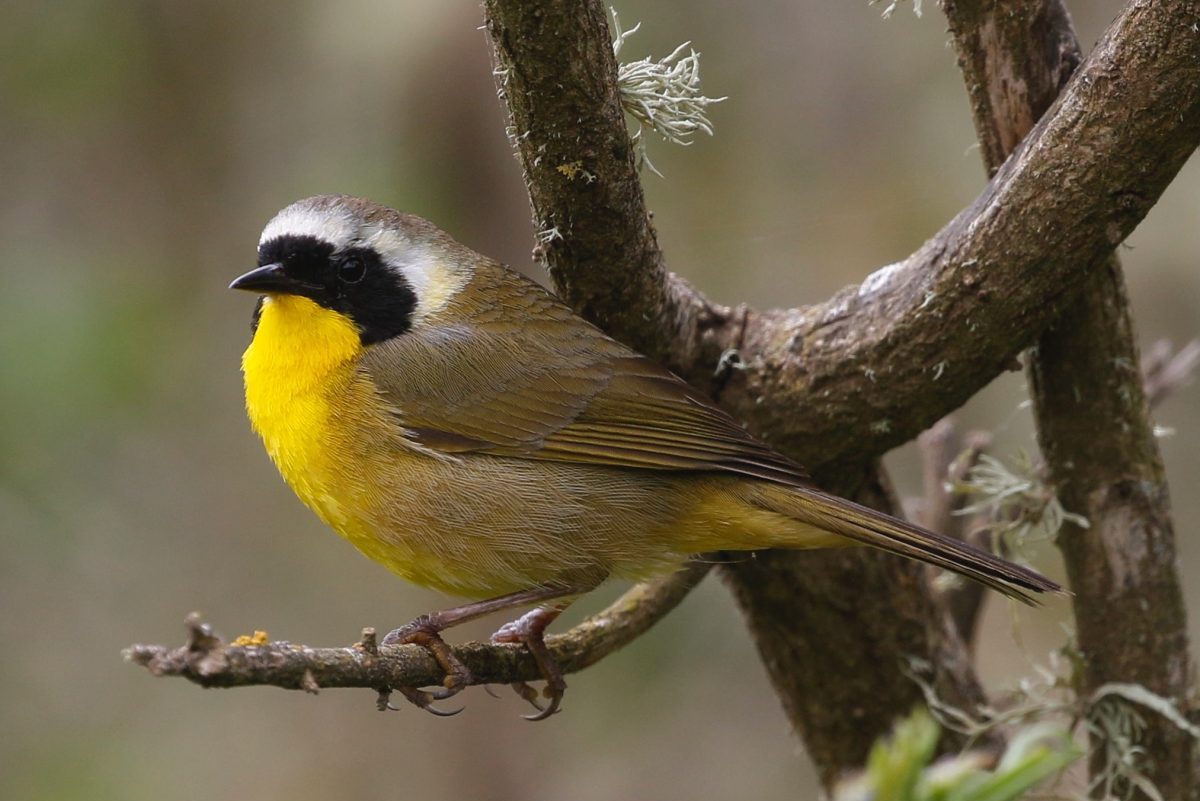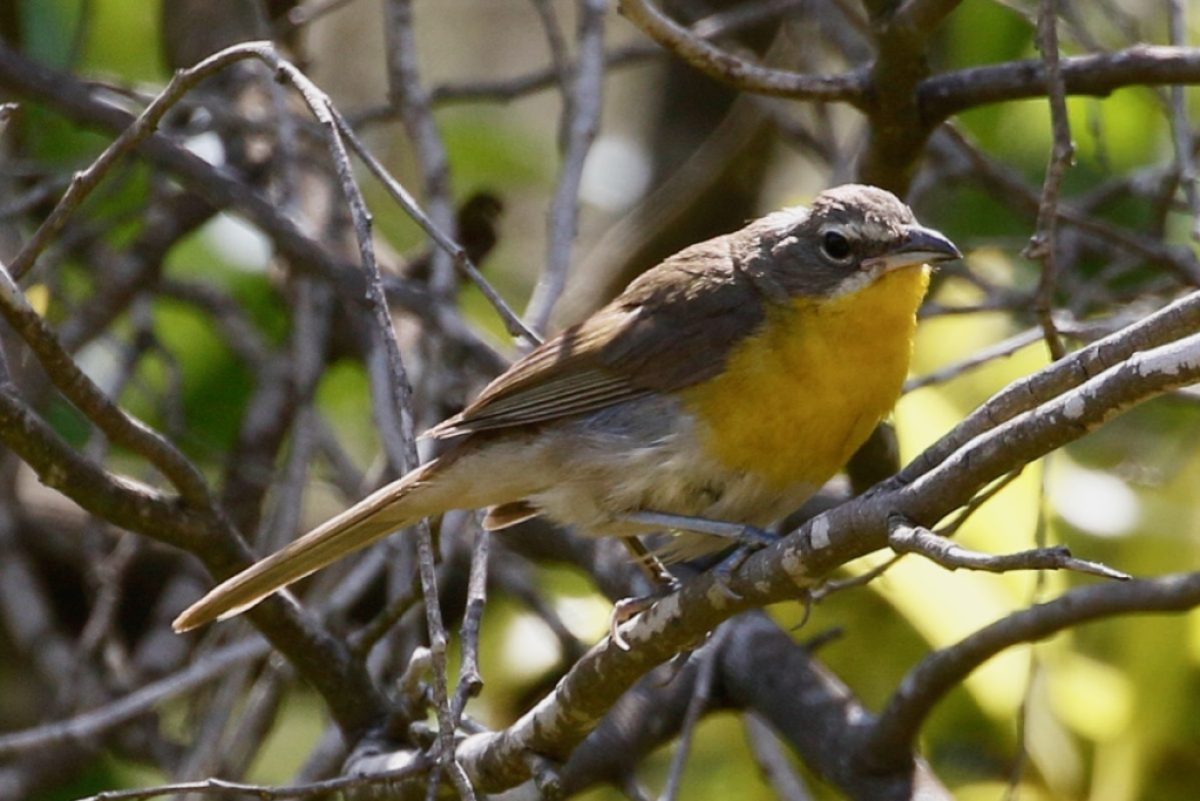Arroyo Burro Open Space Restoration Pays off Dividends for Santa Barbara Bird Population
A Rare Nester — the Yellow-Breasted Chat — Returns

A Rare Nester — the Yellow-Breasted Chat — Returns

Back in mid-May, Libby Patten was excited to hear the song of a yellow-breasted chat coming from dense vegetation at the newly restored Arroyo Burro Open Space. Knowing that it would be unusual for the bird to stick around past the normal migration window, and even more unusual for it to find a mate and attempt to nest, she kept tabs on the bird as it continued to sing into June. As a breeding species, the chat has declined greatly in Santa Barbara County and throughout most of Southern California since the early 1900s, probably due to loss of habitat, and is now found very locally during the summer, and almost never on the coastal plain along the south coast of our county.
The chat has long been a taxonomists’ mystery. For many years it was regarded as a type of warbler. Its bright yellow chest and olive back certainly give it a warbler-like appearance, but it is considerably larger than any warbler, approaching a thrush in size. The song is also most decidedly un-warbler-like. Most North American Warblers have simple repetitive songs, but not so the chat! The Cornell Lab describes it: “the chat offers a cascade of song in the spring, when males deliver streams of whistles, cackles, chuckles, and gurgles with the fluidity of improvisational jazz.”
It’s a loud bird.
Within the last decade, ornithologists decided that the chat doesn’t belong in the family of warblers (Parulidae), and placed it in the Icteriidae family, a grouping all of its own.
As Patten kept track of the singing male over the weeks, catching brief glimpses of it now and again — chats are real skulkers — she began to suspect there was a second bird present. As the male was blasting out his song, she heard a second bird calling on the other side of the trail. The chat’s call is also unique, an electric-sounding down-slurred buzz.
Her curiosity thoroughly piqued, she enlisted my help in tracking down the birds. On my first visit I caught a glimpse of the male and nothing more. But on the second visit, after seeing and hearing nothing for an hour, I struck gold. An adult appeared in a bush, then as I was watching it, I heard the call of another chat. I quickly spotted it and realized its duller plumage and white throat meant it had to be a young bird. Eventually I saw four birds together, two which were certainly juveniles; the chats had indeed nested! Patten was thrilled when I gave her the news.

Over the years I have paid many visits to what is now the Arroyo Burro Open Space. I always thought it had the potential to be a good spot for wildlife, but visits were generally disappointing. Much of the reason for the paucity of life there was that the land was full of non-native vegetation. In particular, a bamboo-like plant called giant cane, native to the Middle East, flourished along the creekside, choking out most other plants.
In the late 1990s, a developer was given the green light to build 25 luxury homes on the land. A civil suit was brought against the project, and the fate of the parcel went to the ballot. Residents overwhelmingly voted to save the land from development. The city purchased 22 acres in 2016 and phase 1 of the restoration project began in 2018. The herculean task of ridding the area of the giant cane and many other invasive plants was completed, the narrow creek channel was widened to create a larger floodplain and lessen bank erosion, and thousands of locally sourced native plants were planted.
Phase 2 of the project was completed in 2022. Walking trails were improved, and a footbridge was constructed over the creek. This bridge can be accessed along Las Positas Road, opposite the main Elings Park entrance. The open space can also be reached from the end of Alan Road.
The plentiful rains of last winter have given the new plants a real boost, and now the sides of the creek are lush with willows, sycamores, and many native shrubs giving prime habitat to such birds as the common yellowthroat. The flowering purple sage is attracting a good number of bees and butterflies. The change in the land is remarkable and speaks volumes about the power of restoration.
Hugh Ranson is a member of Santa Barbara Audubon Society, a nonprofit organization that protects area birdlife and habitat and connects people with birds through education, conservation, and science. For more information, see SantaBarbaraAudubon.org.
Please note this login is to submit events or press releases. Use this page here to login for your Independent subscription
Not a member? Sign up here.
You must be logged in to post a comment.